In today’s era, companies strive to enhance their presence and connect with their target audience. One effective strategy that has gained popularity is implementing employee advocacy programs. These programs empower employees to promote and share company content on their social media platforms, expanding their reach and boosting brand awareness. However, managing programs can be time-consuming. Luckily, there are marketing tools to automate and streamline the process, making employee engagement more efficient and effective.
Thankfully, marketing tools are available that can automate and streamline the process, making it easier for companies to enhance employee engagement efficiently and effectively. By exploring further, you can learn more about these tools and their details, including Omnisend price.

Understanding Employee Advocacy Programs
Before exploring the benefits of automating employee advocacy programs, it’s crucial to grasp what these programs involve. Employee advocacy programs encourage employees to share company news, content, and related information on their networks. The goal is to leverage employees’ trust and influence to extend the company’s reach, increase brand visibility, and drive traffic to assets.
The Advantages of Automation in Employee Advocacy
While employee advocacy programs offer benefits, manually managing them can be time-consuming for companies. This is where marketing tools come into play.
By incorporating automation into aspects of the program, companies can save time, boost efficiency, and enhance employee involvement. Here are a few ways in which marketing tools can aid in the automation of employee advocacy programs:
1. Curating and scheduling content
A key challenge in running an employee advocacy program is ensuring that employees always have access to captivating content to share. Marketing tools can streamline this process by gathering articles, blog posts, and other pertinent content from sources. Additionally, these tools can facilitate post-scheduling, allowing employees to concentrate on manually searching for and sharing content throughout the day.
2. Monitoring and analytics
Another advantage of utilizing marketing tools for employee advocacy programs is the ability to track and analyze the performance of shared content. These tools offer insights into engagement levels, clicks, and conversions. By accessing this data, companies can identify which types of content resonate effectively with their audience and make decisions regarding future strategies for creating and sharing content.
3. Incorporating gamification and incentives
To effectively engage employees in an advocacy program, making their experience enjoyable and rewarding is essential. Marketing tools can automate this process by implementing point systems, leaderboards, and challenges within employee advocacy programs.
This encourages employee participation, promotes a healthy competitive environment, and fosters a sense of community.
4. Compliance and security
Employee advocacy programs require monitoring to ensure employees do not share inappropriate content. Marketing tools can assist in automating compliance and security measures by implementing approval workflows and content filters and conducting compliance audits. By doing the shared content remains aligned with the company’s brand and values, reducing the risks of legal or reputational issues.
5. Integration with marketing platforms
To fully utilize the advantages of an employee advocacy program, it is crucial to integrate it with marketing platforms and initiatives. Marketing tools simplify this process by connecting the advocacy program with social media management tools, email marketing platforms, and CRM systems. This integration allows for a coordinated marketing approach where employee advocacy becomes essential to the overall marketing strategy.
Conclusion
In conclusion, employee advocacy programs have effectively increased brand visibility and engaged target audiences. However, manually managing these programs can consume time and resources. That’s where marketing tools come into play. By automating aspects of employee advocacy programs, companies can save time, improve efficiency, and maximize employee engagement. Marketing tools provide a range of features that can impact how employee advocacy programs are managed and executed. From curating and scheduling content to tracking and analyzing data and incorporating gamification and incentivization while ensuring compliance and security, these tools enable companies to effectively utilize their employees’ social networks to amplify their brand message and accomplish marketing objectives. The power of automation plays a significant role in this process.










Leave a Reply